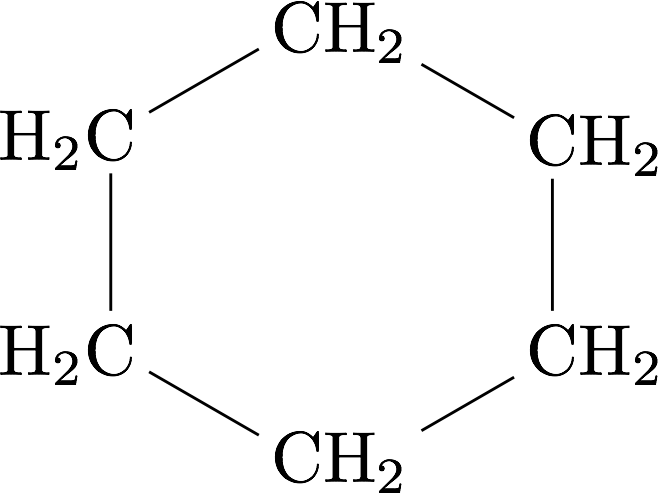Exercices Alcanes et alcools : structure et propriétés
Entrainement
- 1/6
Soit les trois molécules $A$, $B$ et $C$ suivantes :
Molécule $A$ $\text{H}_3\text{C}\ -\ \text{H}_2\text{C} \ -\ \text{CH}_3$ Molécule $B$ $$\begin{array}{c} & \text{CH}_3& \\ & \mid & \\ \text{H}_3\text{C}\ -\ \text{H}_2\text{C}\ -\ \text{H}_2\text{C}\ - &\text{CH}&-\ \text{CH}_3 \end{array}$$ Molécule $C$ $\text{H}_3\text{C}\ -\ \text{H}_2\text{C}\ -\ \text{CH} \ =\ \text{CH}\ -\ \text{CH}_3$ Une de ces trois molécules n’est pas un alcane. Pourquoi ?
- 1/6
Soit la molécule $A$ suivante : $$\begin{array}{ccc} \text{CH}_3 & &\text{CH}_3 &&\text{CH}_3 &&&&\text{CH}_3 & \\ | & & | & & | & & & & | \\ \text{H}_2\text{C}&-& \text{C} &-& \text{CH}&-&\text{H}_2\text{C}&-&\text{CH} &- &\text{CH}_3 \\ & & | \\ && \text{H}_2 \text{C} & - & \text{CH}_3 \end{array}$$
Quel type de molécule est cette molécule $A$ ?
Évaluation
- 1/6
Soit l’alcane cyclique suivant :

Nommez cette molécule.
